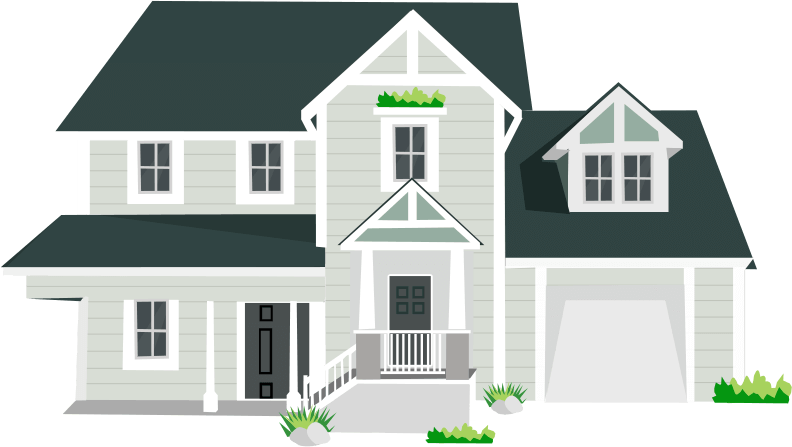Utilize improved equity. When your home’s value increases, you may qualify for a Cash-Out refinance to make use of that money, which can be reinvested in the value of the home.
Cash-Out Refinance: Making full use of your money
20% of REALTORS say a kitchen upgrade helped close a home sale, according to the 2019 Remodeling Impact Report
Potentially secure better terms. If the initial terms of your financing were weak, a Cash-Out Refinance can potentially yield you better terms, which can be a benefit to your monthly budget.
What You Need to Know about the Cash-Out Refinancing Option
Cash-Out Refinancing is more common than you think. According to statistics from MBA.org, Cash Out Refinance loans were among the most popular refinancing loans in the country, with 63% of such loans comprising all refinancing in the fourth quarter of 2017.
This method of refinancing has recovered. After the home mortgage crisis over a decade ago, confidence has been restored and home equity is moving up, making it a good time to secure low interest rates and excess cash.
Like any other refinance loan, Cash-Out Refinance loans help you take advantage of interest rates. Worried that interest rates might climb in the next five years? Ten years? Taking advantage of current interest rates with a Cash-Out Refinance can help you use extra cash while interest rates remain low.
There’s still room for home equity growth. According to some statistics, the historical rate of Cash-Out Refinancing and home equities suggests that the trend is moving upward, which means there’s still plenty of opportunity for utilizing extra cash with a Cash-Out Refinance.
Put your money to use. Cash-Out Refinancing means you can turn money that was sitting in your home’s equity into liquid cash that you can then put to use in the way you see fit, such as paying off debt elsewhere, going on a vacation, saving for college tuition — just about anything!
2 Ways to Use Your FHA 203(k) Loan
Buy a Fixer-Upper (and Fix It Up)
Or... Renovate Your Current Home!
Your Renovation Wish List Could Include...
Increase window size
Bring in more natural light
Finish a basement or attic
Create a mother-in-law apartment or guest space
Correct foundational issues
Protect your investment for the long-term
Add a detached garage when one does not exist
There’s room for everyone
Knock down walls
Open up the floor plan to create versatile, welcoming spaces
Flood-proof your property
Add a retaining wall to prevent expensive damage
Repair the pool
Tired of leaks and cracks? Fix the pool & start enjoying it
Expand or refresh the kitchen
Cooking is just more fun in an updated kitchen
Add square footage
Growing your family? Grow your home alongside it!
And so much more! All funded by your single, convenient FHA 203(k) Renovation loan.
And start planning your renovations now!
After remodeling, 74% of owners have a greater desire to be in their home, and 65% have increased enjoyment in their home.
How Does a Renovation Loan Work?
Depending on the types of repairs you plan to do, you have two options when it comes to securing a FHA 203(k) Renovation Loan: Limited and Standard.
The Limited 203(k) loan
The Limited 203(k) loan is for non-structural or “cosmetic” repairs. It covers up to $35,000 in renovation costs. With a Limited loan, you can do nearly anything that doesn’t affect the home’s structure! Think kitchen and bathroom remodels, carpet and flooring replacement, painting, appliance replacement, and much more.
The Standard 203(k) loan
The Standard 203(k) loan is a loan for projects with repair costs over $35,000. It can be used for structural or non-structural repairs. With a Standard Loan, you have even more flexibility. You can expand the home’s footprint, improve accessibility for differently abled people, and even move the home to a different site.
What Do You Need to Know about a Cash-Out Refinance Loan?
What is a Cash-Out Refinance Loan?
This is a straightforward home refinancing loan. However, it includes unique circumstances. If you only owe $200,000 on a home that has appreciated to a value of $300,000, for example, you may qualify for refinancing that allows you to receive a loan over the amount of equity you hold, giving you an excess of cash.
What are the terms of a Cash-Out Refinance loan?
The terms are remarkably similar to many mortgages. What’s different is whether your home qualifies—it helps when you have built equity in your home, especially when you’ve purchased a home that’s appreciated in value over time. Like many refinance loans, you will have a new monthly payment to satisfy the terms of the new loan.
What can I do with the extra money?
That’s up to you. Many people choose to reinvest this money into the value of their home by using the money for renovations. Other people pay down other debts they have, which in turn makes their monthly mortgage payment far more manageable. What’s important is to use this cash in a way that’s responsible for your given financial situation.
How much cash will I get?
This depends on factors such as the previous and current value of your home, but many people can expect to borrow as much as 80% of the home’s current value. However, this is different for every individual, so make sure that you do your research before you set clear expectations for the money you’ll receive.
